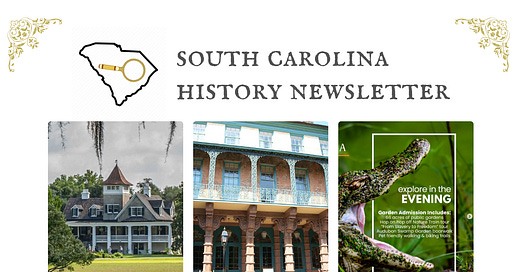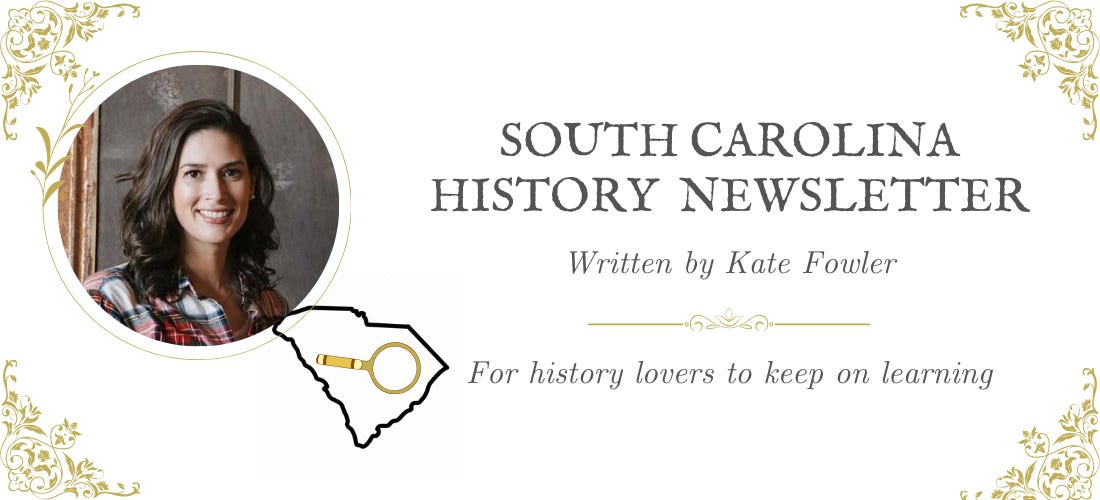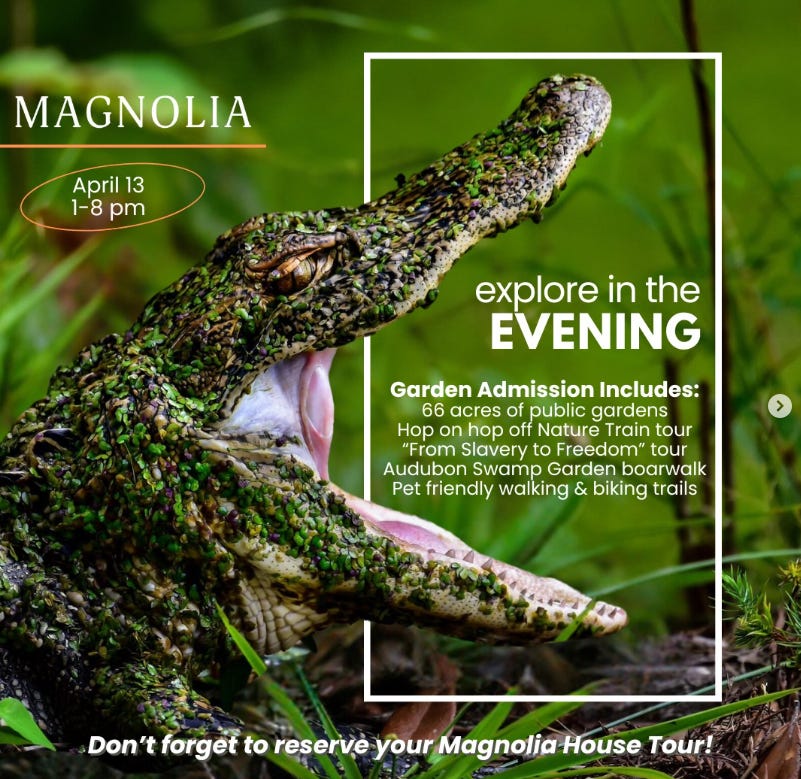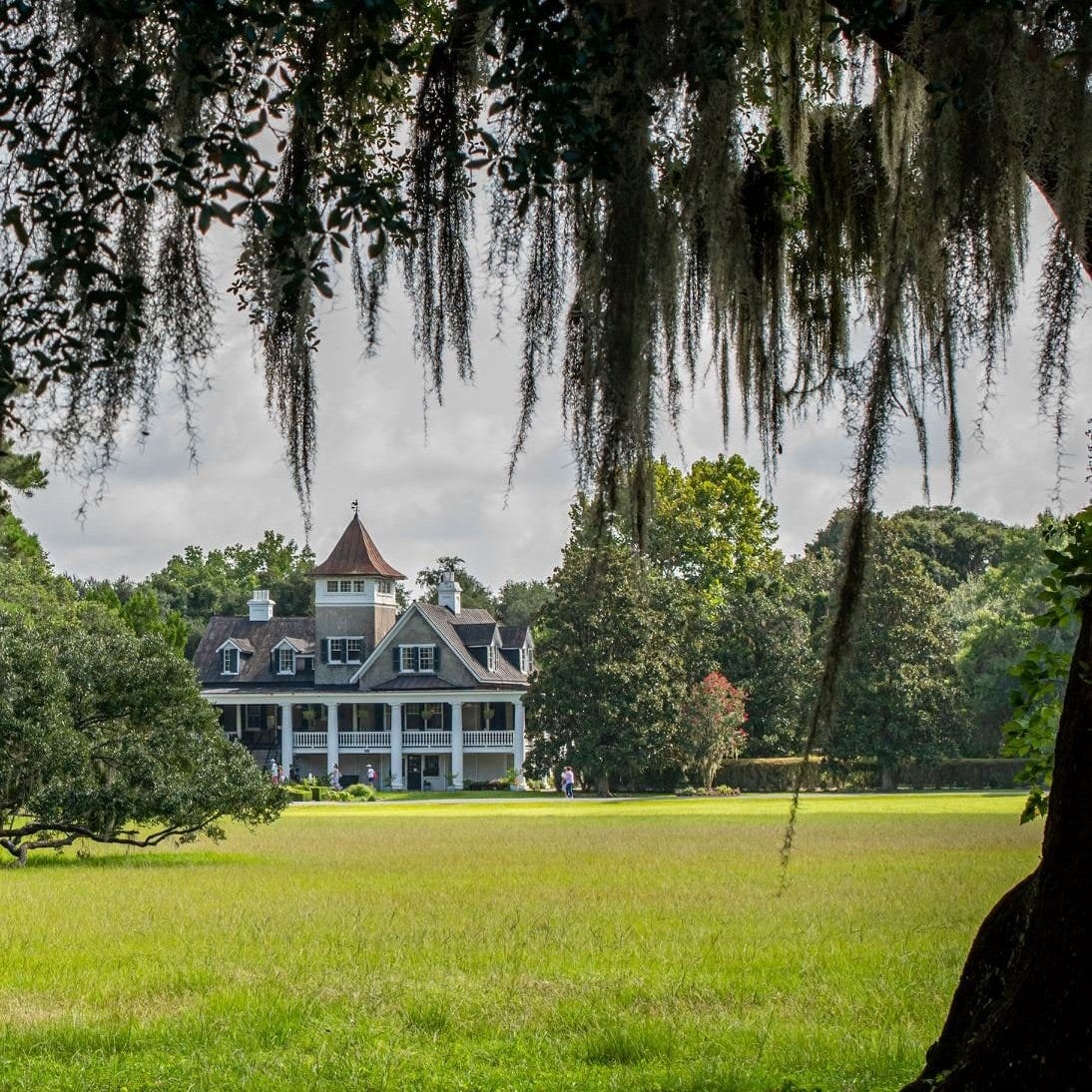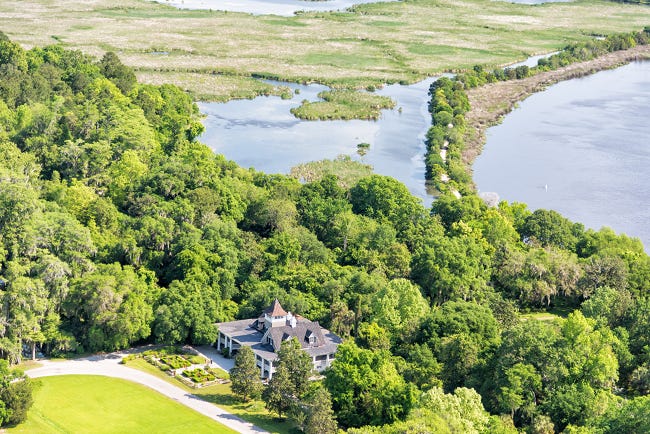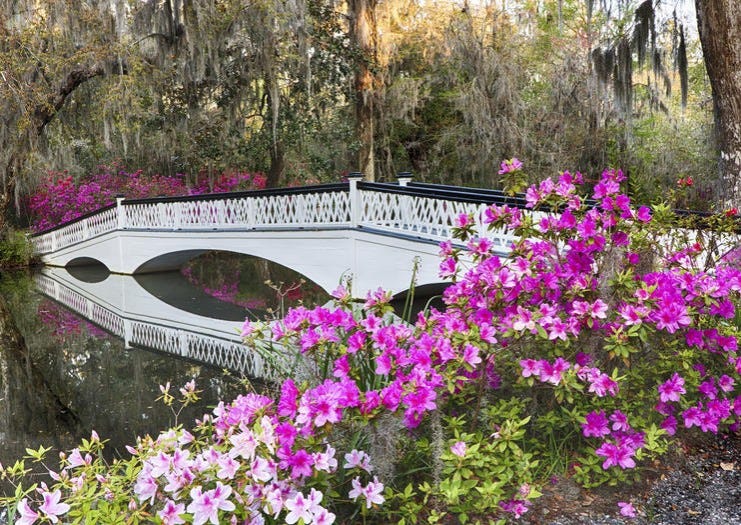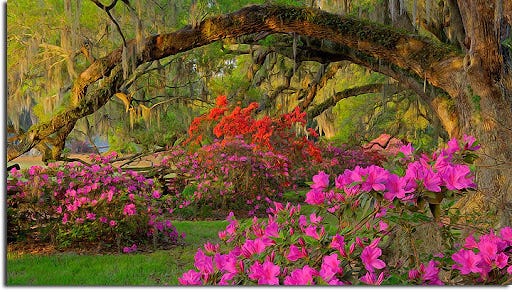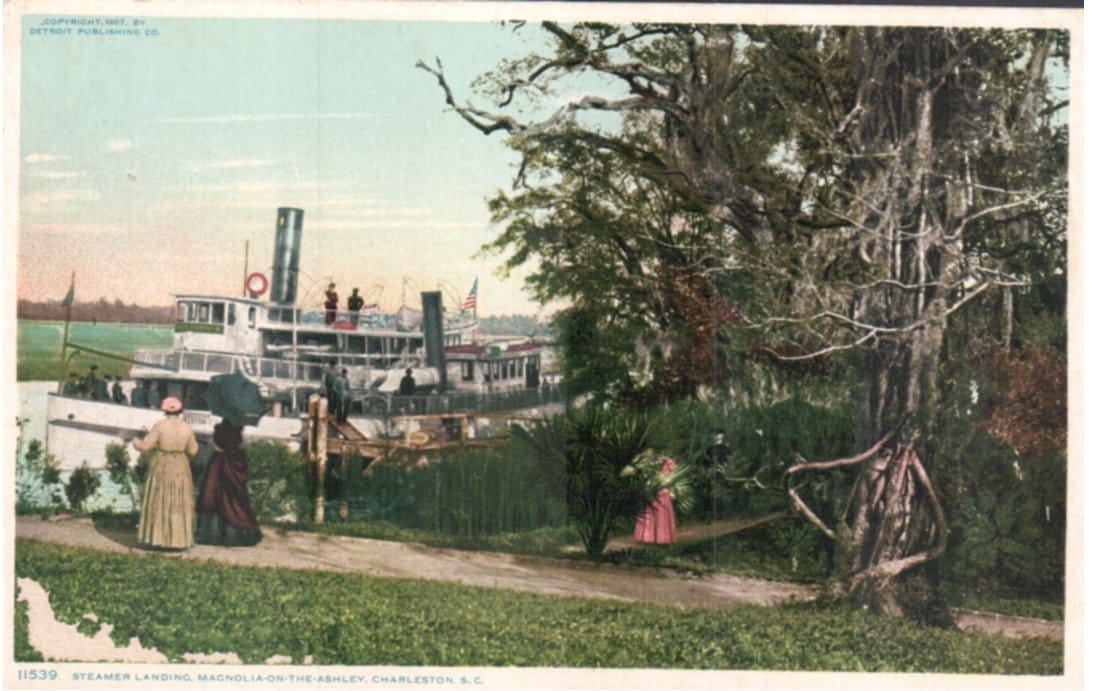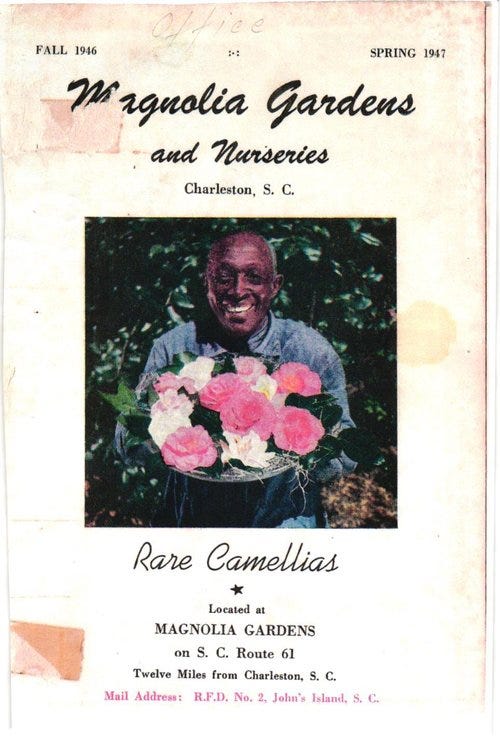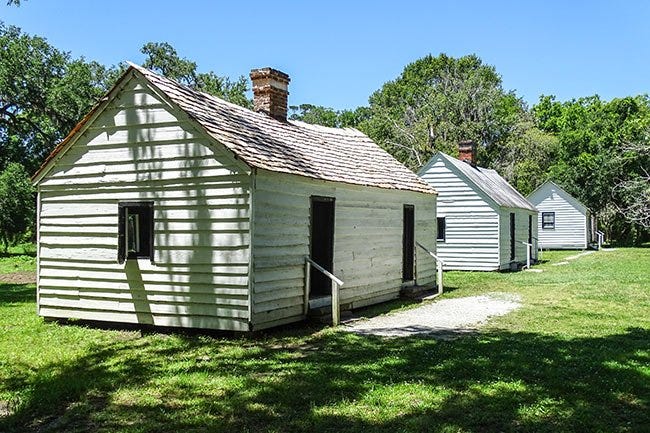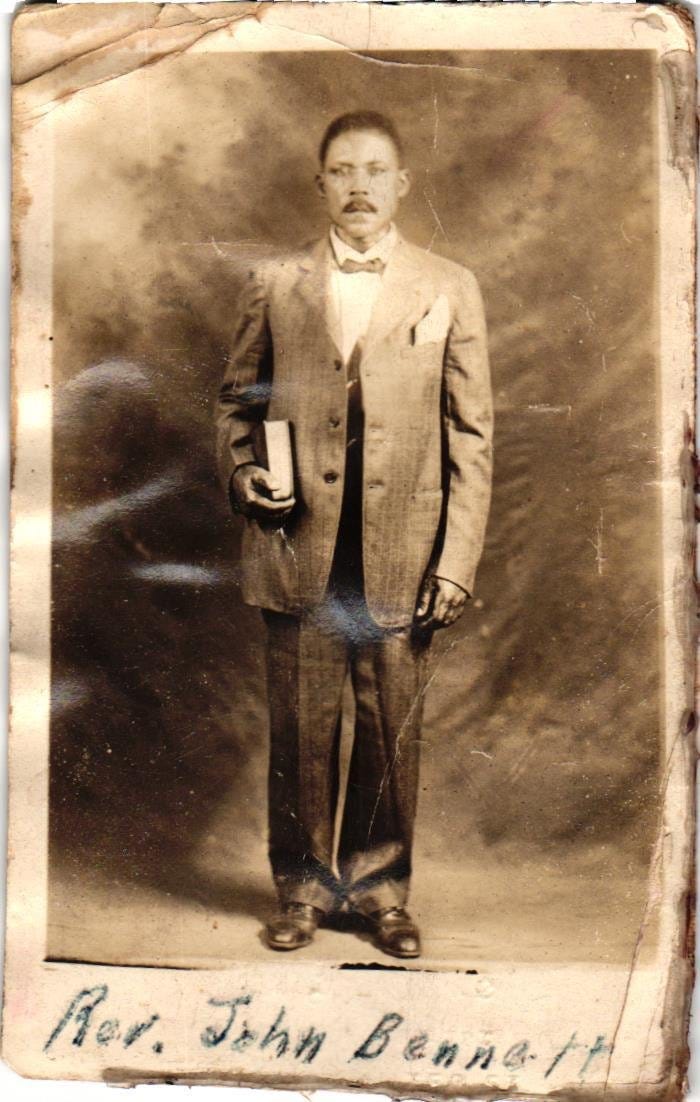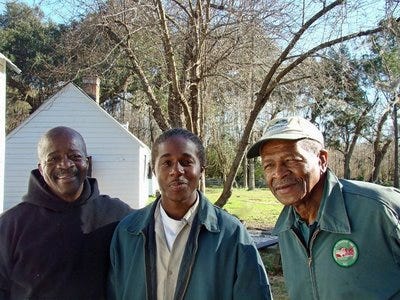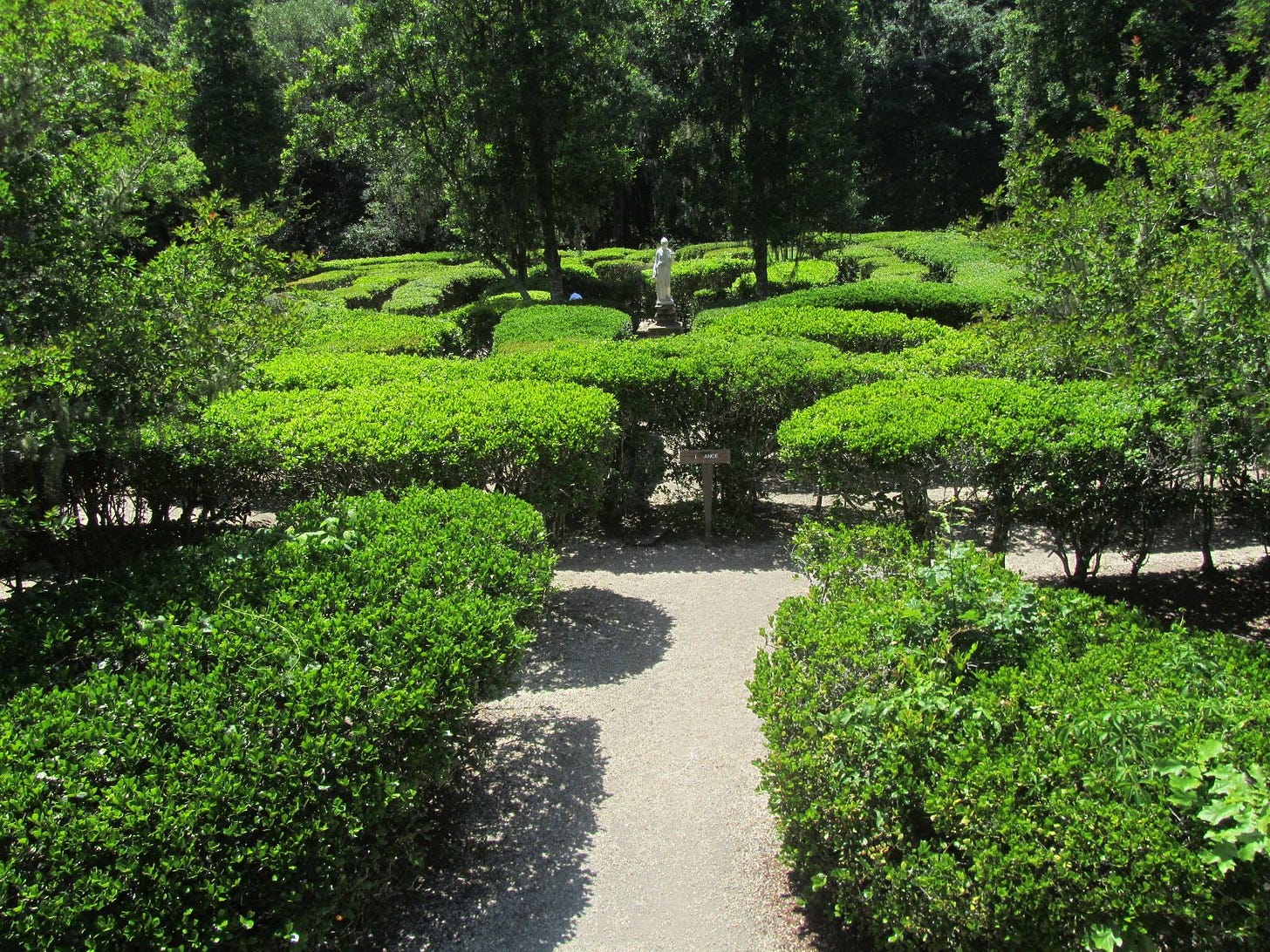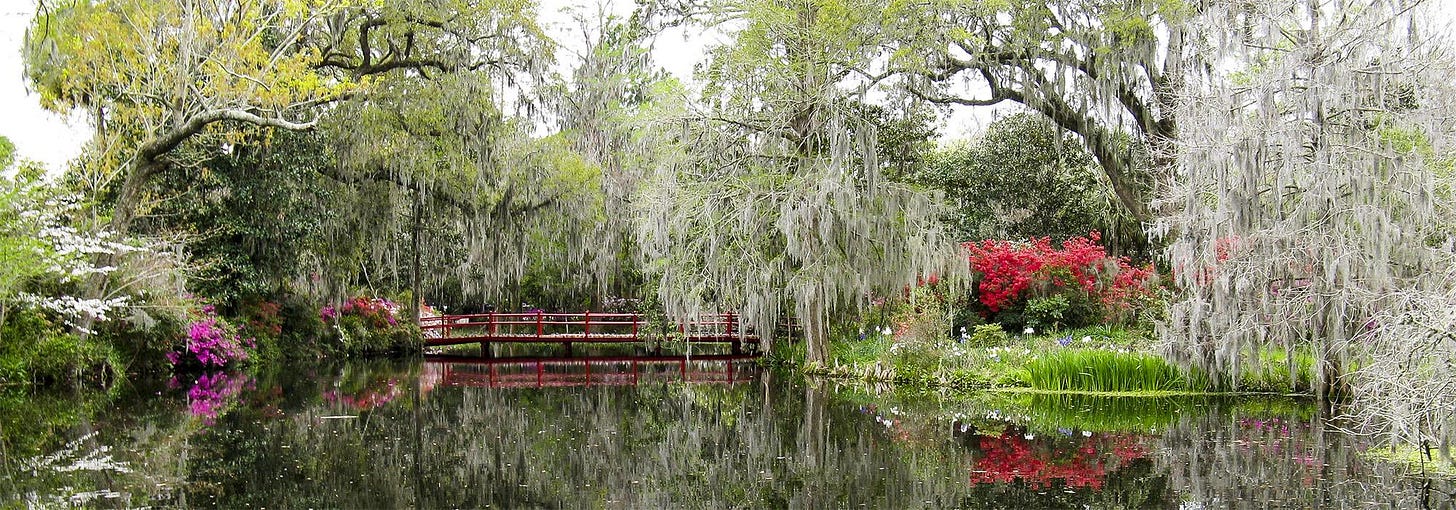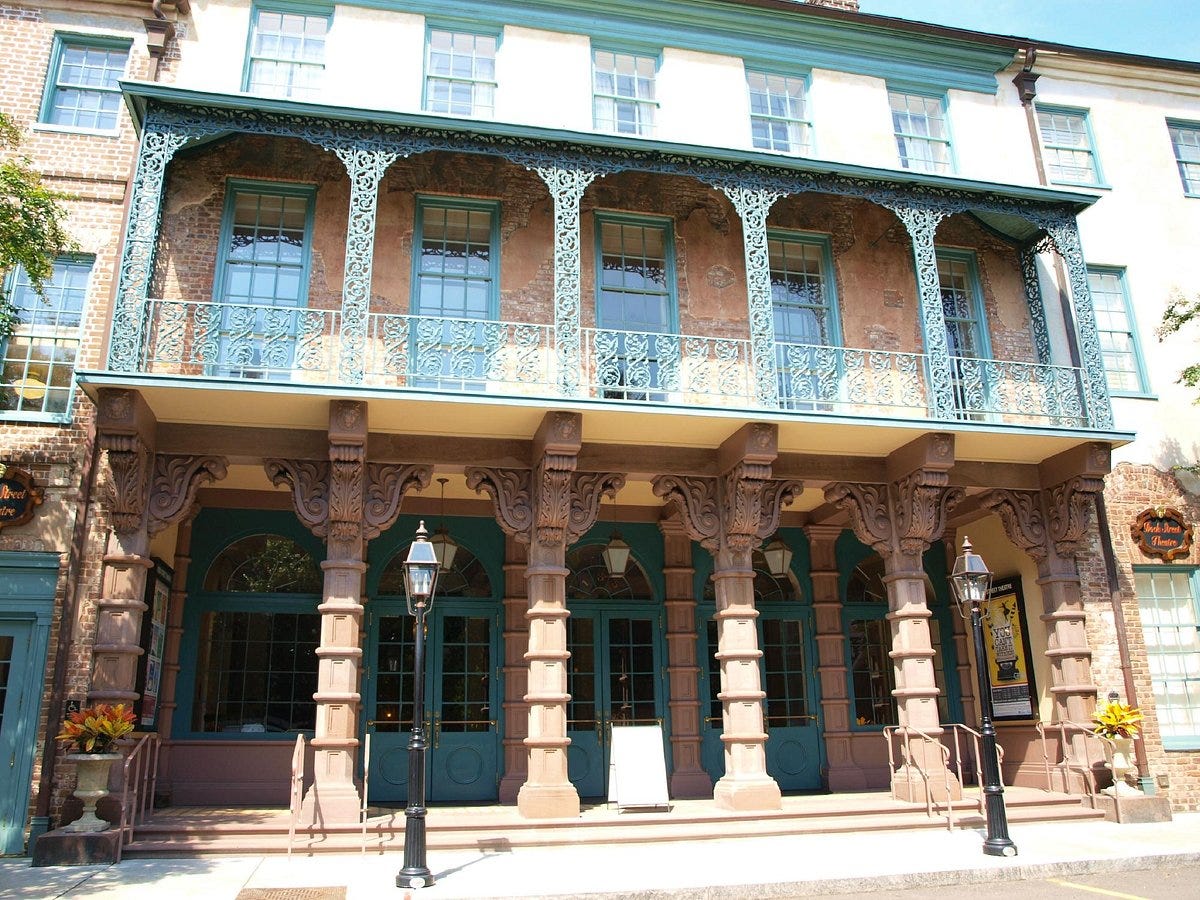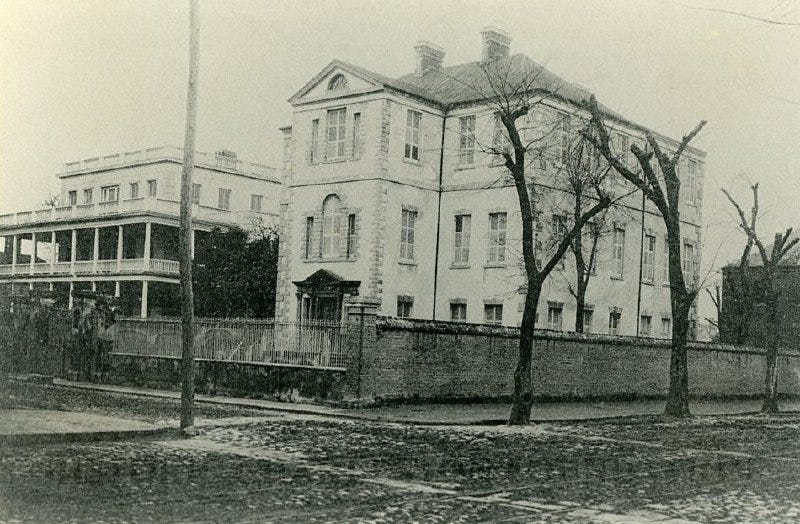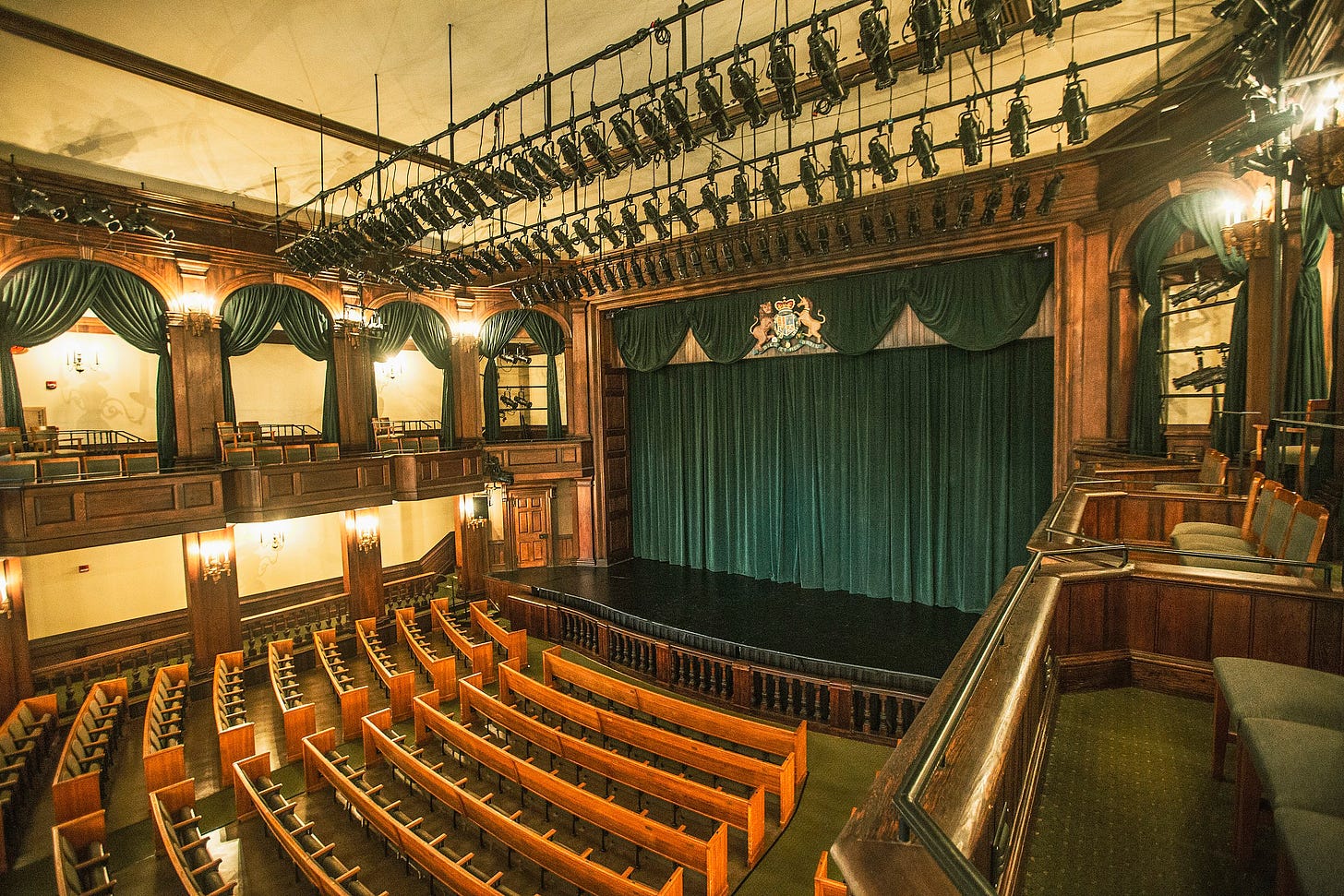#62: Magnolia Plantation, Dock Street Theatre, and an evening exploration
For South Carolina history lovers far and wide! Enjoy weekly SC history and upcoming SC historical events
Welcome to the first 100 days of the South Carolina History Newsletter! My name is Kate Fowler and I live in Greenville, SC. I have a 9-5 job in marketing, and outside of work, have a deep love of history. I started this newsletter as a passion project to learn more about our beautiful state and build a community of fellow SC history lovers along the way! To establish a foundation for the newsletter and to grow my expertise on a wide variety of South Carolina historical topics, this past February I challenged myself to post 100 newsletters in 100 days. After this coming May 20th, the newsletter will become weekly. Thank you for joining the journey!
Dear reader,
Welcome to Newsletter #62 of The South Carolina History Newsletter! I’m so happy you’re here.
Here’s a little welcome/update audio message:
As always, I’d like to also extend a special welcome to the following new free subscribers — woohoo! Thank you for subscribing.
amywoodtv
kejohnson
maryjoanderson
aats247
eagleeye1783
dstradinger
dbrehm11
jgiudicesc
I hope you enjoy today’s newsletter, and as always, please feel free to reply to this email with your ideas and suggestions on South Carolina history you’d like to learn more about. I’m only a click away.
Additionally, please join us & keep the conversation going by becoming a member of our SC History Newsletter Facebook Community here! I can’t wait to meet you.
And now, let’s learn some South Carolina history!
Yours truly,
Kate
(Writing from Greenville, SC)
➳ Featured SC History Event
Please enjoy our featured SC History Event below, and click here to visit my SC History Events Calendar that organizes all the upcoming SC history events I have discovered. Please let me know if you’d like to add an event to the calendar! Reply to this email or send me a note at schistorynewsletter@gmail.com.
TONIGHT, Saturday, April 13th, 1:00 - 8:00 pm | “Magnolia Plantation’s Explore In The Evening” | Magnolia Plantation | Charleston, SC | General Admission ($21-$35)
“Explore Magnolia Plantation & Gardens in the evening Saturday, April 13 from 1-8 pm! For one day only, enjoy altered business hours and explore our historic gardens as the sun sets. Hop on and off throughout the gardens with our guided Nature Train tour! Stroll the Audubon Swamp Garden boardwalk and observe gators, turtles, and many migratory birds. Tours will be available, but limited. Be sure to reserve your Magnolia House tour today! Download the free Magnolia Plantation app to see what's in bloom this April. Tickets are available onsite and online at magnoliaplantation.com!”
➳ SC History Fun Facts
I.
Did you know that in the late 1800s, Magnolia Plantation & Gardens was recognized in Baedeker’s Guide to the United States as one of the top places to see in the country — and was listed alongside Niagara Falls and the Grand Canyon?
Listen to this section in the mini audio voiceover below!
Magnolia Plantation & Gardens is one of the oldest plantations in the South. Located near Charleston on the Ashley River, the property consists of over 400 acres of protected wetlands.
During South Carolina’s Proprietary Period, the land was originally granted to one of the area’s first settlers, Morris Mathews. It would eventually became the ancestral residence of the Drayton family.
The Drayton family has owned Magnolia since the 1670s. Today, operations are overseen by a board of directors that includes the 10th and 11th generations of Drayton family descendants.
On an adjoining property (just a 2-minute drive away), the historic Drayton Hall was built in 1738 for John Drayton.
Magnolia was originally a rice plantation, with “extensive earthworks of dams and dikes — built by enslaved workers — in fields along the river for irrigating land for rice cultivation.”
The plantation became known for its gardens after the Revere
nd John Grimké Drayton inherited the property in the 1840s.
Through his mother, Reverend John Grimké Drayton was the grandson of Thomas Drayton, who bequeathed the plantation to him on condition that he take the Drayton surname, which he did.
Note that through his father, John was a nephew of sisters and abolitionists Sarah and Angelina Grimké, who I wrote about a few days ago in SC History Newsletter #62.
In 1838, the Rev. John Grimké Drayton followed his calling into ministry by attending the General Theological Seminary in New York. While en route to New York, he met his future wife Julia Ewing through his cousins in Philadelphia.
In 1840, the Reverand married Julia and returned home to Magnolia plantation.
The Reverend suffered a health scare in 1851 when he developed tuberculosis.
Upon advice of his doctor, the Reverend “turned his whole efforts” towards landscaping the Magnolia gardens and surroundings, while also beautifying the property as an elaborate romantic gesture to please his wife. Julia was from Philadelphia and “not entirely thrilled about moving from the city to what was then the middle of nowhere.”
Reverend Drayton directed the enslaved workers at Magnolia in the building and planting of the gardens that continue to flourish almost 200 years later.
He was among the first to use Camellia japonica in an outdoor setting (circa 1820s), and is said to have introduced the first of the species to America.
Under his supervision, the Magnolia gardens became well known in the antebellum period for their camellias, azaleas, and live oak trees.
As for the Magnolia Plantation house, the original manor house burned down in 1822 and a new house was constructed shortly after. See photo below. It is believed that the second house was burned down during the Civil War, likely by Union troops. The main house currently on site was constructed in Summerville, moved to Magnolia after the Civil War, and “has undergone several architectural modifications since then.”
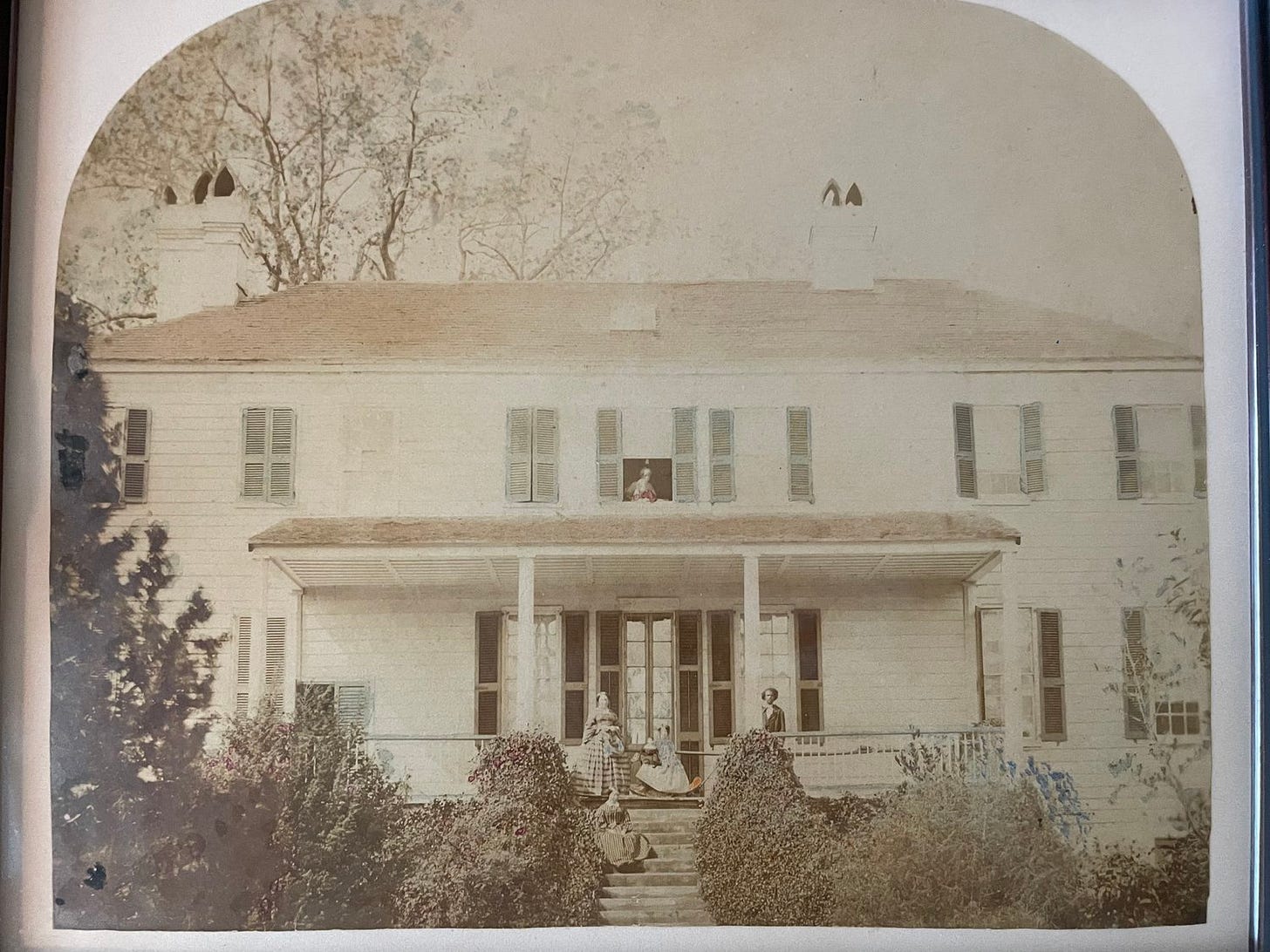
Following the Civil War, Reverend Drayton believed the best way to preserve the gardens at Magnolia was to open them the public. Visitors have been admiring these gardens since the early 1870s.
The postcard below from 1870 shows the arrival of visitors via steamboat at the Magnolia plantation.
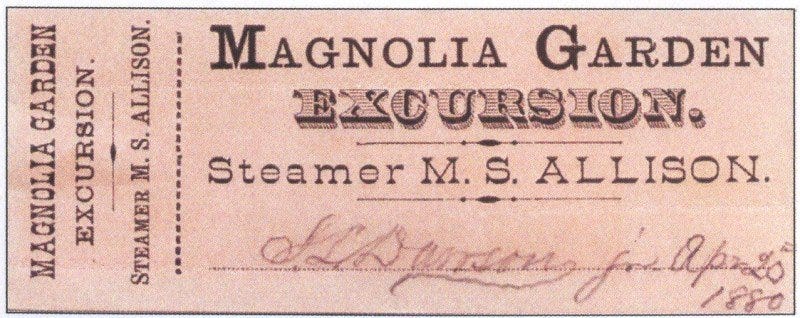
In the late 19th century, Magnolia Gardens “was recognized in Baedeker’s Guide to the United States as one of the top places to see in the country.” Only two other places received such notoriety: Niagara Falls and the Grand Canyon.
One of many famous visitors to Magnolia in this period was John James Audubon, for whom Magnolia's Audubon Swamp Garden is named.
Through most of the 20th century, Magnolia gardens also had a commercial plant nursery, which was locally renowned. Many species of camellia and azalea were cultivated on site, and revenue from the nursery helped support the gardens, which at that time, were only open a few weeks each spring.
Note that 3 camellia species cultivated at Magnolia gardens have been registered and named for people of African descent employed at the gardens.
On that note, one cannot tell the story of Magnolia Plantation & Gardens without also telling the story of the many enslaved men and women who built and shaped the property — and their descendants.
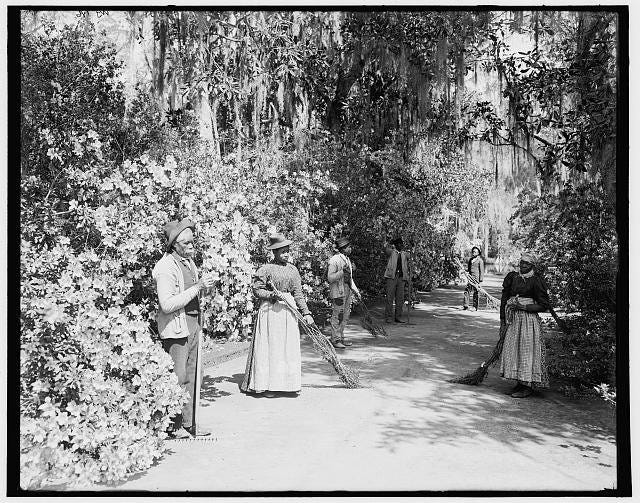
After Emancipation, “roughly half” of the newly freed African Americans stayed at Magnolia to work as paid gardeners, tour guides, and domestic servants.
4 former slave cabins have been preserved and restored at the property. They now provide a focal point for education and discussion about the history of slavery and African American culture not only in South Carolina, but also the United States.
Adam Bennett was the first garden superintendent at Magnolia, a position he held starting in the early 1870s. When the gardens first opened to the public and many visitors arrived by river to view the gardens, it was “either the Reverend Drayton or Adam Bennett who would greet the steamboats after they docked.”
Adam trained his son John in the stewardship duties of the gardens until Adam's death in 1910. John continued as the garden superintendent until his death in 1926.
Today, Bennett descendants continue to visit Magnolia, even getting married on the crest of the plantation’s White Bridge. Susan Weston Bennett, who died in 2016, celebrated her 90th birthday at Magnolia in 2006.
Bennett family descendent Sorona Bennett-Jenkins told the Charleston Mercury:
“We choose Magnolia for celebrations and with each celebration the story is acknowledged and told to each new generation…Lest we forget, we will not allow our family’s history to be cast into the abyss. Our ancestors deserve the acknowledgement.”
The Leach family has also been working on the property since the early 20th century. Members of the family continue to care for the gardens as they have for more than 100 years.
In 2008, Taylor Drayton Nelson, then CEO of Magnolia, partnered with genealogist and anthropologist Toni Carrier to launch Lowcountry Africana, an online database that has since “helped thousands of people learn about their enslaved ancestors at Drayton Hall, Magnolia Plantation and in the Lowcountry area, including comedian Chris Rock and former first lady Michelle Obama.”
Now open year-round, Magnolia features a Magnolia House tour, the Nature Train tour, and "From Slavery to Freedom" tour.
Today, 25 acres of the property are devoted to the gardens, 16 acres for the wide lawn surrounding the live oak allée, and 150 acres for a marsh and waterfowl conservatory.
The gardens feature numerous azalea plantings, as well as:
Barbados Tropical Garden — indoor tropical garden.
Biblical Garden — featuring plants mentioned in the Bible, with Old Testament and New Testament areas.
Camellia Collection — first Camellia japonica plantings date from the 1820s, with current plantings containing nearly 900 varieties. Nearly 150 were bred in the gardens' nursery.
Cattail Wildlife Refuge — approximately 500 acres, with a tower for bird observation.
Cypress Lake — bald cypress trees, up to 100 years old, along riverbanks and wetlands.
Flowerdale — oldest sections established in 1680. Formal plantings of annuals set within triangular beds enclosed by boxwood hedges. Two large camellias date from the 1840s.
Long Bridge — built in the 1840s, one of seven bridges on the grounds.
Maze — replica of England's famous Hampton Court maze, but planted with some 500 Camellia sasanqua interspersed with Burford holly.
Nature Center and Zoo — domesticated animals typical to Southern plantations, injured or orphaned native animals, and exotic birds, including Malayan jungle fowl, guinea hens, and peacocks.
Swamp Garden — emphasizing indigenous plants and rich ecosystem.
The Magnolia Plantation Foundation, a philanthropic entity created by J. Drayton Hastie, Sr., provides charitable aid to wildlife, conservation, horticultural, and educational entities, with a special focus on local African American causes.
The property is listed on the National Register of Historic Places.
Sources:
“History — Magnolia Plantation & Gardens.” Magnolia Plantation & Gardens, https://www.magnoliaplantation.com/history. Accessed 12 Apr. 2024.
“Magnolia Plantation and Gardens, Charleston County.” National Register Sites in South Carolina, http://www.nationalregister.sc.gov/charleston/S10817710050/index.htm. Accessed 12 Apr. 2024.
Bull, Elias B.; Bernard Kearse. "Magnolia Plantation and Gardens" (PDF). National Register of Historic Places - Nomination and Inventory. Retrieved 12 Apr. 2024.
“2013-2014 Bill 3736: Reverend John Grimke Drayton - South Carolina Legislature Online.” South Carolina Legislature Online, http://www.scstatehouse.gov/sess120_2013-2014/bills/3736.htm. Accessed 12 Apr. 2024.
Felton, Ariel. “Plantation Tourism Is Shifting. Descendants of the Enslaved Are Part of That Movement. - The Washington Post.” Washington Post, 1 Oct. 2021, https://www.washingtonpost.com/travel/2021/10/01/charleston-plantation-tourism-magnolia-middleton-mcleod/. Accessed 12 Apr. 2024.
Frazier, Herb. “Bennett Family Wedding Tradition Continues at Magnolia Gardens.” Charleston Mercury, 5 Nov. 2020, https://www.charlestonmercury.com/single-post/bennett-family-wedding-tradition-continues-at-magnolia-gardens. Accessed 12 Apr. 2024.
“Magnolia Plantation and Gardens – Ashley River Historic Corridor.” Ashley River Historic Corridor, https://ashleyriverhistoriccorridor.org/sites/magnolia-plantation-and-gardens/. Accessed 12 Apr. 2024.
Have you visited Magnolia Plantation & Gardens? Leave a comment below and tell us about your experience!
II.
Did you know that Dock Street Theatre in Charleston was the first structure in America built exclusively to be used for theatrical performances?
Listen to this section in the mini audio voiceover below!
On February 12, 1736 the Dock Street Theatre opened with a performance of The Recruiting Officer by the Irish writer George Farquhar.
Built on the corner of Church Street and Dock Street (now known as Queen Street), the Historic Dock Street Theatre was “the first structure in America built exclusively to be used for theatrical performances.”
Flora, the first opera performance in America, took place in 1735 at the Historic Dock Street Theatre.

The original Dock Street Theatre was “probably destroyed by the Great Fire of 1740” which destroyed many of the buildings in Charleston's French Quarter.
In 1809, the Planter's Hotel was built on this site and in 1835 the wrought iron balcony and sandstone columns of the Church Street facade were added.
A number of notable persons worked and patronized the Planter's Hotel including the noted 19th Century actor Junius Brutus Booth (father of Edwin and John Wilkes Booth).
Charleston's famed Planter's Punch cocktail of rum, sugar, and citrus was first introduced at the Planter's Hotel.
After the Civil War, the Planter's Hotel fell into disrepair and was slated for demolition. But in 1935, Charleston businessman Milton Pearlstine made the property available to the City of Charleston, and at the urging of Mayor Burnet Maybank and other notable citizens, the original building became a Depression Era WPA (Works Progress Administration) project. At that time, the present theatre was constructed within the shell of the Planter's Hotel.
The hotel's grand foyer became the grand foyer of the theatre and the hotel's dining room now serves as the box office lobby.
The beautiful woodwork and mantels of the second-floor drawing room were salvaged from the Radcliffe-King Mansion (circa 1799) which stood at the corner of George and Meeting Streets and was razed to build the College of Charleston gymnasium, another WPA project.
“Modeled on eighteenth century London playhouses by Charleston architect Albert Simons,” the present Dock Street Theatre's new stage house and auditorium were built in the hotel's courtyard.
The local carpenters who were put to work as a part of this Depression era relief effort utilized “locally grown and milled native black cypress” for the beautiful warm wooden interior.
Following this $350,000 renovation, The Historic Dock Street Theatre's second grand opening took place on November 26, 1937. Notables in the audience included author DuBose Heyward (author of the novel Porgy), who was named writer-in-residence.
The Historic Dock Street Theatre reopened for the third time on March 18th, 2010 after a 3-year, $19 million dollar renovation by the City of Charleston. This extensive full-scale renovation “brought the historic theatre into the 21st century with state-of-the-art lighting and sound, modern heating and air conditioning, and new restrooms and seating. In addition, the theatre was made seismically secure and fully handicapped accessible. Extensive sound-proofing was added to ensure that outside noises no longer intruded on performances inside.”
Now owned and managed by the City of Charleston, the Historic Dock Street Theatre (soon to enter its fourth century as the heart of Charleston's artistic life) is home to many of the City's finest cultural institutions including Charleston Literary Festival, MOJA Festival, Spoleto Festival USA, and more.
Charleston Stage, which became the resident professional theatre at the Dock Street Theatre in 1978, “produces over 100 performances each season and plays to more than 49,000 patrons annually.”
In addition, more than 15,000 South Carolina students enjoy special school day performances offered by Charleston Stage each year at the Historic Dock Street Theatre.
Sources:
Curley, Beth. “America’s First Theatre.” Charleston Stage. https://charlestonstage.com/about-us/dock-street-theatre#:~:text=On%20February%2012%2C%201736%20the,be%20used%20for%20theatrical%20performances. Accessed 12 Apr. 2024.
Scott, Bruce. “‘Flora’ — An 18th-Century British Invasion.” NPR, 20 May 2011, https://www.npr.org/2011/05/20/136469565/flora-an-18th-century-british-invasion. Accessed 12 Apr. 2024.
Have you seen a show at the Dock Street Theatre? Leave a comment below and tell us about your experience!
➳ Quote from an SC historical figure
“This is our family’s soil…We certainly didn’t benefit from it monetarily, however, the family started there and we’ve earned the right to go there and have a wedding.”
— Sorona Bennett-Jenkins, a descendent of the Bennett family, who were the first garden superintendents of Magnolia Plantation & Gardens. Ms. Bennett-Jenkins was married to Edward Jenkins on Magnolia’s White Bridge on August 10th, 1985, in a “ceremony witnessed by more than 200 relatives and friends.” Their wedding at Magnolia follows a tradition of her family members being married on the property.
I always want to improve my work. Answer the poll below to give me your review of today’s newsletter. I also welcome your suggestions for new content! Simply reply to this email with your ideas. Thank you!

